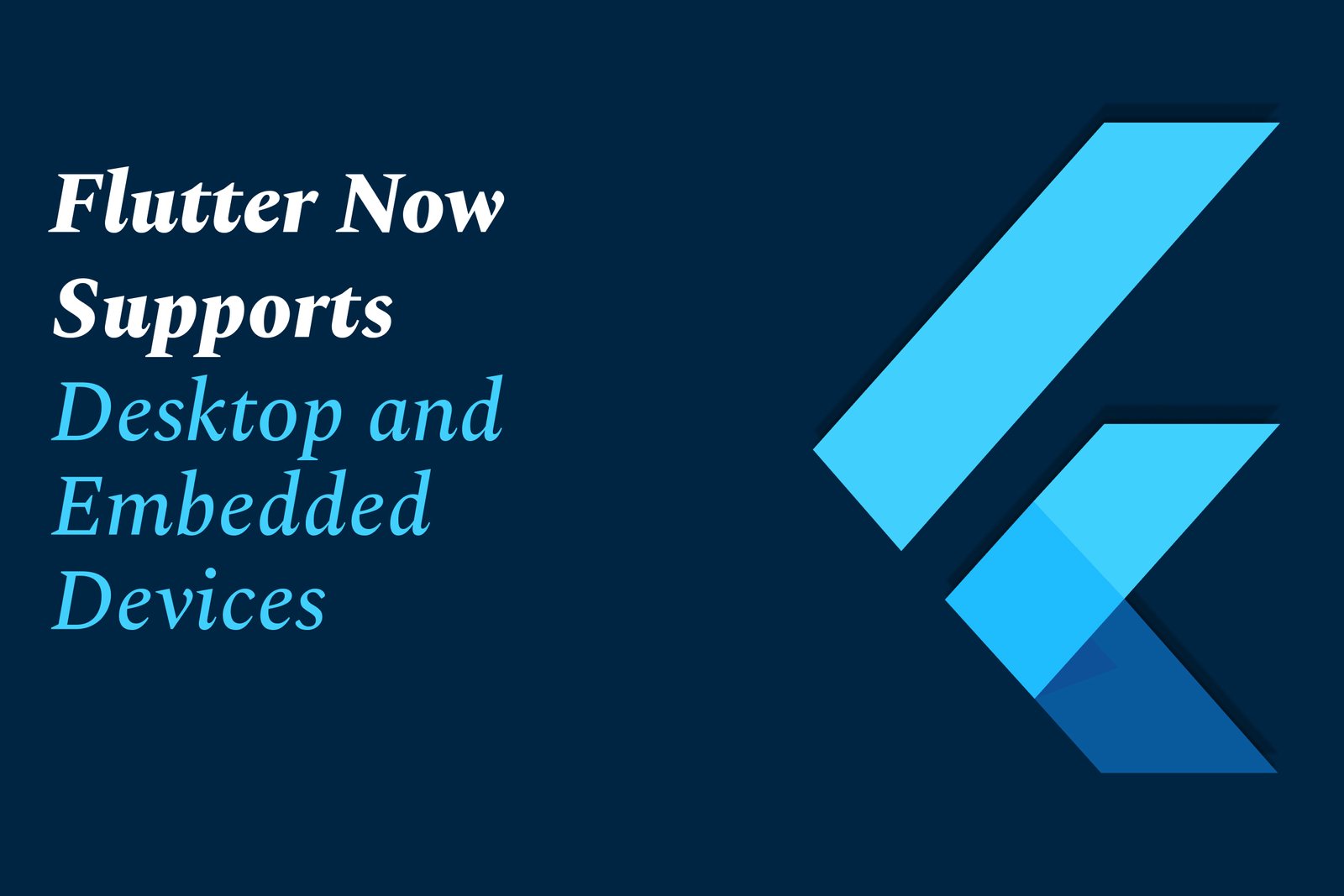Flutter now supports desktop and embedded devices
Flutter now supports building apps for desktop (Windows, macOS, Linux) and embedded devices, enabling developers to create high-performance, native apps across multiple platforms using a single codebase with seamless UI and native integrations.
Flutter Now Supports Desktop and Embedded Devices
1 ) Introduction to Flutter's Expanded Platform Support
Flutter, originally known for mobile app development, has extended its capabilities to support desktop (Windows, macOS, Linux) and embedded devices. This means developers can now build beautiful, natively compiled applications for multiple form factors using a single codebase.
2 ) Multi Platform Development with Flutter
Flutter enables developers to build for mobile, web, desktop, and embedded devices seamlessly.
This unification allows code reuse across platforms, significantly reducing development time and effort.
Its performance benefits come from compiling to native ARM or Intel machine code without relying on large browser engines.
3 ) Desktop Support Highlights
Flutter provides native compiled performance for desktop apps with full access to platform APIs such as Win32 for Windows, Cocoa for macOS, and UNIX for Linux.
Apps built with Flutter for desktop can target popular distribution channels like Windows Store, Mac App Store, and Linux Snap Store.
Flutter supports client side decoration (CSD) for better integration with desktop environments and aims to match native application aesthetics (e.g., GTK header bars on Linux and integration with global system menus).
4 ) Embedded Systems and Flutter
Flutter’s reach now includes embedded devices, which are specialized hardware systems designed for dedicated functions, often with real time computing needs.
Embedded systems vary widely from simple microcontrollers to complex processors and peripherals, some of which can benefit from Flutter’s UI capabilities.
With Flutter, developers can create customized, adaptive user interfaces on embedded devices, enabling modern, visually appealing embedded applications.
5 ) Developer Experience and Ecosystem
Flutter emphasizes being fast, productive, and flexible, featuring hot reload for near instantaneous UI updates during development.
Extensive developer tooling, automated testing, and profiling tools support production quality apps across all supported platforms.
A growing ecosystem with community involvement, events, packages, and documentation further strengthens Flutter’s position as a multi platform development framework.
6 ) Ongoing Developments and Roadmap
While Google leads Flutter’s mobile and web development focus, Canonical (Ubuntu) actively invests in desktop support, ensuring continual growth and evolution for Linux, Windows, and macOS desktop platforms.
Flutter’s roadmap includes improving desktop integration, theming with native widgets like Yaru/Adwaita on Linux, and enhancing embedded device support.
7 ) Community and Case Studies
Various companies like Supercell and STAGE have leveraged Flutter to optimize app size and development speed.
Community discussions highlight requests for better desktop integration features such as dbusmenu support and client side decorations to fully integrate Flutter apps into desktop environments.
Summary:
Flutter’s recent advancements substantially broaden its scope from mobile and web to desktop and embedded devices, empowering developers to deliver performant, beautiful applications across an extensive range of hardware. This multi platform, single codebase approach redefines app development efficiency while embracing the unique needs of desktop and embedded environments.
https://justacademy.in/news-detail/new-features-in-flutter-4.0-stable
https://justacademy.in/news-detail/flutter-ai-chatbot-integration-guide
https://justacademy.in/news-detail/best-flutter-practices-every-developer-should-follow
https://justacademy.in/news-detail/flutterflow-and-low-code-revolution-in-2025
https://justacademy.in/news-detail/flutter’s-new-devtools-make-debugging-easier-than-ever
Related Posts
In 2025, top Angular libraries offer modern, feature-rich components and tools for building dynamic web apps. From powerful data grids to low-code platforms like UI Bakery, these libraries enhance development speed, UI design, and scalability, making them essential for Angular developers.
Migrating from AngularJS to Angular 17 involves gradually upgrading your app by running both frameworks together using tools like ngUpgrade, rewriting components in TypeScript, and adopting Angular’s modern architecture to enhance performance, maintainability, and long-term support.
Angular state management tools help organize and handle app data efficiently, improving scalability and maintainability. Popular options include NgRx for robust, RxJS-based patterns, and newer Signal Store solutions that offer simpler, reactive approaches integrated tightly with Angular’s latest features.
RxJS in Angular empowers developers to manage asynchronous data streams with powerful operators like `forkJoin`, `combineLatest`, and `zip`. Mastering these key operators in 2025 is essential for building efficient, reactive applications that handle complex event sequences seamlessly.
Angular performance optimization in 2025 focuses on improving app speed and responsiveness by using techniques like OnPush change detection, lazy loading, efficient data caching, and AOT compilation. These practices reduce load times, enhance user experience, and ensure scalable, fast Angular applications.
In 2025, Angular remains preferred for large-scale, enterprise apps with its robust, all-in-one framework, while Vue attracts developers seeking simplicity and fast development for smaller projects. Both frameworks excel, with choice driven by project needs and team expertise.
Angular Signals are a new reactive primitive in Angular 16 that enable fine-grained, efficient change detection by automatically tracking dependencies and updating only affected parts of the UI. They simplify state management and boost app performance, revolutionizing Angular's reactivity model.
Angular interview questions to prepare in 2025 focus on core concepts like components, directives, data binding, routing, and dependency injection, along with TypeScript mastery and latest Angular features to ensure strong practical knowledge for building scalable, efficient web applications.
AngularJS reached its official end of support in January 2022, meaning no further updates or security patches. To ensure app security and performance, developers should consider migrating to modern Angular versions or seek third-party long-term support options if immediate migration isn’t possible.
The Angular Roadmap 2025 highlights upcoming features focused on improving developer experience and performance, including zoneless Angular, Signals integration, enhanced Forms, async data handling, improved HMR, and expanded Angular Material/CDK enhancements, driving modern, efficient web app development.










